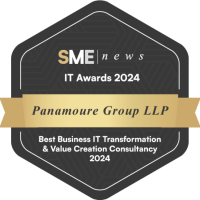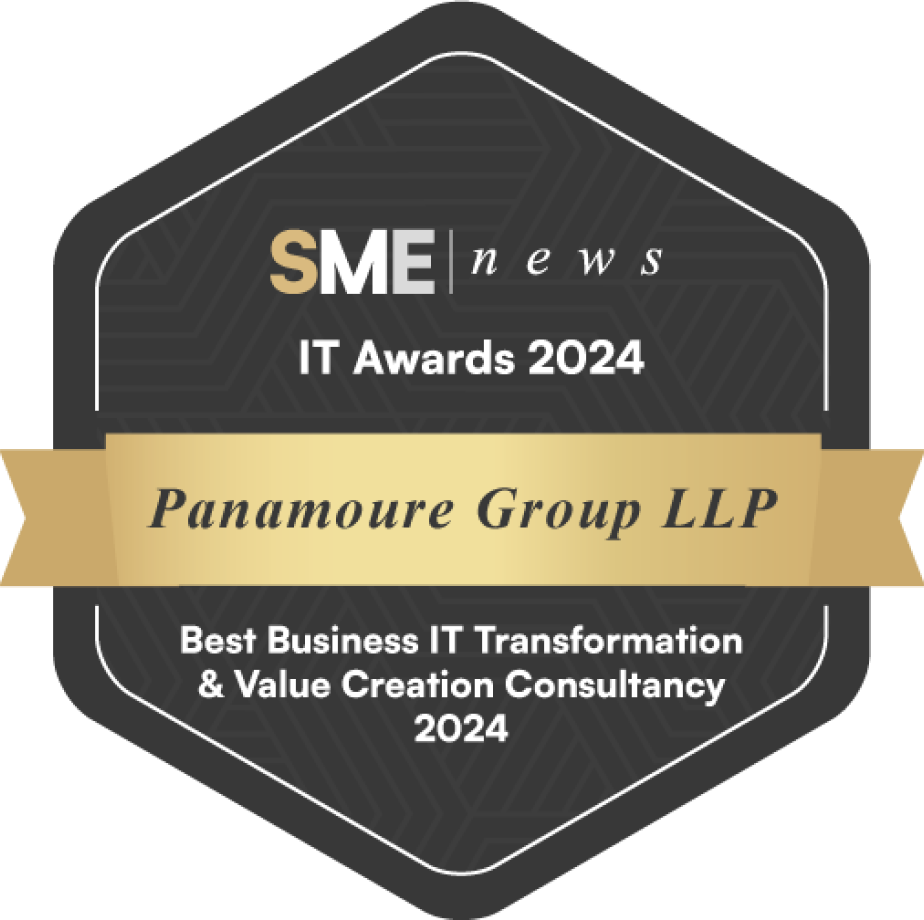Panamoure’s clients represent a broad cross–section of the economy, with most being considered large-scale SMEs with £50-300m revenue. Firms of this size do not have the budgets to develop dedicated IT teams focused on AI. They frequently compete with larger firms and so need to focus their efforts on areas where they recognise potential for either improvement in their operating cost model or differentiation in what they offer customers.
We identify priorities through a customised, business-led approach
Panamoure’s approach addresses both avenues simultaneously by taking a business-led approach. In a nutshell, we use our capability model library to help them arrive at a customised capability map for their firm. This will include all functions, from sales and marketing through to finance and shared services such as legal and HR. We work closely with the owners of each function to allow the ‘gut feel’ knowledge they have from day-to-day working practices to be infused into the model. They help identify workflows that are either costly, inefficient or falling behind the competition. The result of this work produces a heatmap of the firm identifying priority areas for the business.
The next step is to scan the market of IT platforms. We prefer to use platforms as they generally tend to offer enterprise capability at a scaled cost to suit SMEs. In this way, we can select market leading services without the cost restraints of on-premises IT. Matching the available services to the prioritised workflows is an artform with few wrong or right answers. To help narrow down the available options, we help our clients settle on a set of guiding principles that can be repurposed for any given use case. The principles need to cover security, data privacy, and operational flexibility. Crucially, they need to ensure that the end users of the candidate solutions are engaged and bought into the proposed change.
Our twin-track strategy delivers early value and keeps our clients AI-relevant
Even with careful planning there are risks attached to changing the way business is conducted. For this reason, most firms tend to follow a twin-track approach. The first is intended to develop momentum and build confidence across the firm. This is best done using SaaS platforms that are well established and deliver well defined outcomes. For marketing this might mean AI led B2B lead enrichment with a platform like 6sense. For finance this could mean cutting cost and errors from invoice management with Rossum AI. In each case the workflow is discrete, measurable and generates super quick ROI. As sales increase and costs are reduced, the firm’s management are able to develop confidence in tech to genuinely improve their business in ways that are tangible and easy to understand.
A complementary and more strategic approach is founded on the collection, custody, processing, and presentation of data. This approach is less workflow specific and instead focuses on the following: developing AI muscle mass, learning to set up and use cloud-based data platforms, understanding how to handle customer and corporate data safely, developing operating principles that address security risks, and ultimately upskilling people in the business. The consolidated data opens up a range of potential use cases. In some cases, proprietary data can be used in combination with SaaS tooling to improve performance. On the more innovative side of the scale firms can experiment with using machine learning algorithms to predict customer behaviour and inform product development. In both cases the outcomes are driven by their own datasets and thus generate unique outcomes that are not available to the competition.
A twin-track approach can therefore offer firms the chance to deliver early value, build confidence in new technologies and ultimately keep their businesses relevant in the age of AI.





